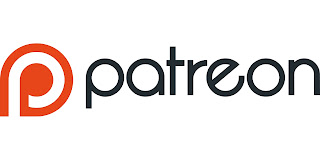Launching a successful Patreon is quite an endeavour. From building an audience and gathering a mailing list to setting pledge levels and arranging rewards, there’s so much to do and it all has to be done right and in the right order. Happily, flubbing a Patreon launch is so much easier!
This simple, six-step process will have you with a desolate Patreon and a looming, yet vague, feeling of obligation to hypothetical future patrons in no time!
- Make a Patreon account – Obviously, you’ll want to reserve a good URL. Only jerks URL squat, but you’ve got a brand to protect, so it’s okay.
- Set up your page, using to best pictures you have to hand, despite a less-than stellar portfolio – You can work on the content later, when people are giving you money based on your promises and obvious potential!
- Create some posts – It’s okay if you don’t know what you’re doing, you can figure it out as you go but, for now, just create some content. Patrons can read through old content while they wait for you to upload new stuff.
- Launch the page! – You don’t need a big launch, just moxy, grit and a can-do attitude.
- Make something, anything – Things you could post include advance access to blog posts. Maybe it’ll give you the impetus to write more often!
- Give it a few months, then tell people you have a Patreon using a click-bait blog post.
For more articles on learning to be a professional artist, support me on Patreon.
Seriously, though. I’d been umming and ahhing over making a Patreon page for a long time and decided to have a look at what it is and how it works. I accidentally launched the page while editing it and couldn’t find a way to un-launch it.
I’d been listening to the Fizzle show podcast and got concerned that, without a large social media following and a sizeable mailing list, I’d blown my chance of a successful launch and damned myself to abject failure. Fortunately, a few months later, I was accepted into the Tiny Dragons artbook and was able to piggyback off that success to tell people I had the blasted thing:
I’m still trying to figure out what I’m doing with Patreon, but I’m getting there.
That link again: https://www.patreon.com/cheerfulomelette
Because I’m not super awkward about self-promotion or anything.

